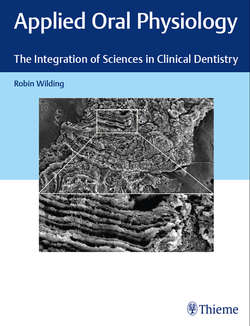Читать книгу Applied Oral Physiology - Robin Wilding - Страница 24
На сайте Литреса книга снята с продажи.
2.3 Response of the Pulp–Dentin to Caries
ОглавлениеThe unhindered progress of caries with irreversible damage to the pulp–dentin and periodontium, which has been outlined above, is relatively unusual except in rapidly progressing carious lesions. More commonly, the caries process is gradual, and the pulp–dentin has time to mount some defense. While caries of enamel is clearly a dynamic process of dissolution and precipitation, it is not a vital process in the sense that living cellular reactions occur. In contrast, the pulp–dentin is a vital tissue capable of both a biomineralization process and a physical/chemical process providing some degree of repair to damaged dentin.
The caries process in dentin involves the demineralization of the mineral component and breakdown of the organic component, and so it is quite similar to the process of destruction which occurs in enamel, except that it progresses approximately twice as fast in dentin. This rapid progress is due to the ease with which organisms are able to migrate down the dentin tubules toward the pulp. These organisms may be seen in a section through a carious lesion. In the advancing front, just a few pioneer organisms are seen in contrast to the more established outer zones where the tubules are full of organisms (▶ Fig. 2.16).
Carious lesions in dentin consist of two distinct layers having different microscopic and chemical structures. The outer layer is heavily infected with bacteria, which are mainly located in the tubule spaces. The dentin collagen fibers are denatured, and so the structural organization disappears and there is no organic matrix to remineralize. The inner layer is more sparsely infected, but it has been demineralized by plaque acid. It still contains high concentrations of mineral salts and may be remineralized (▶ Fig. 2.17).
